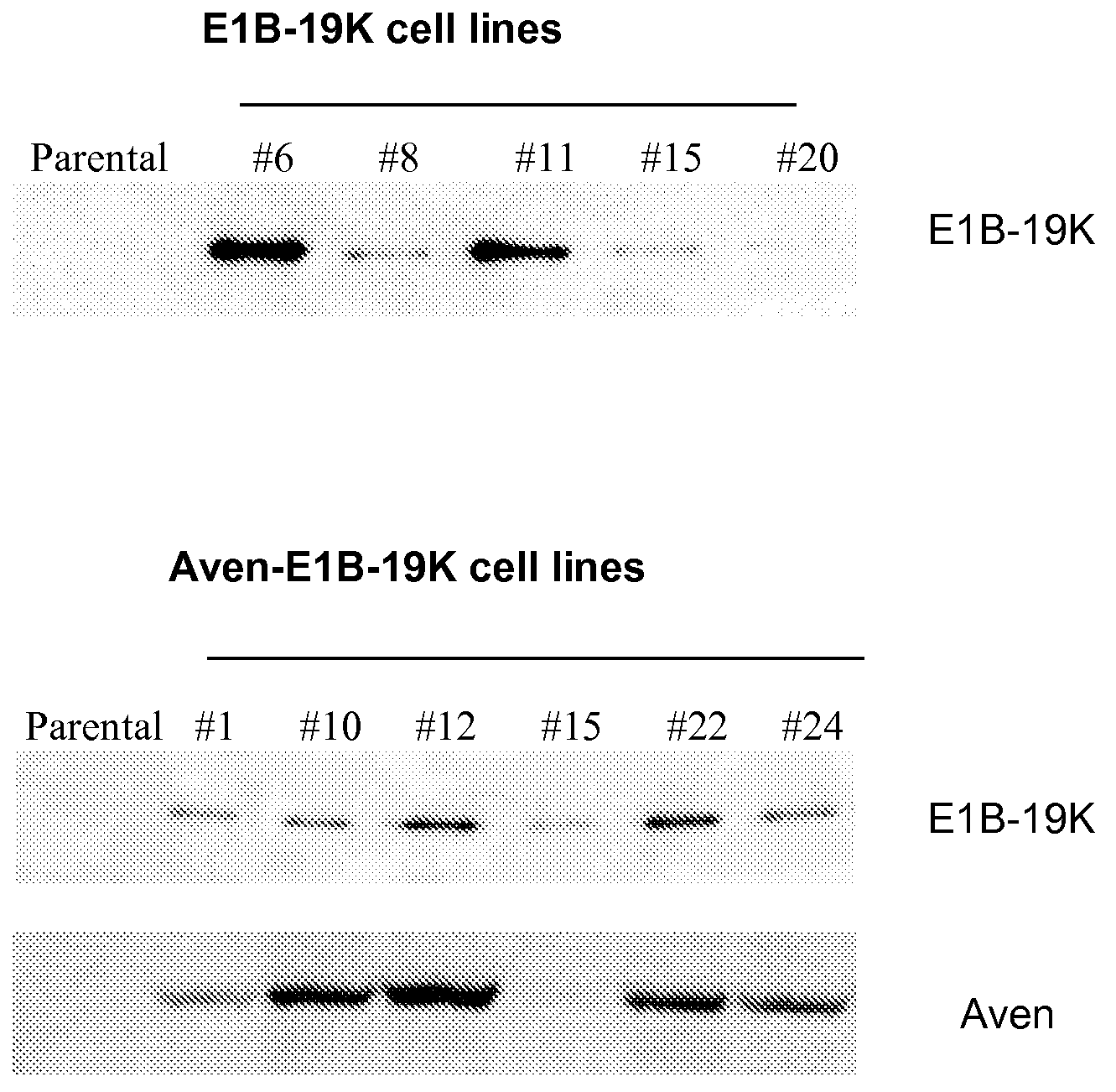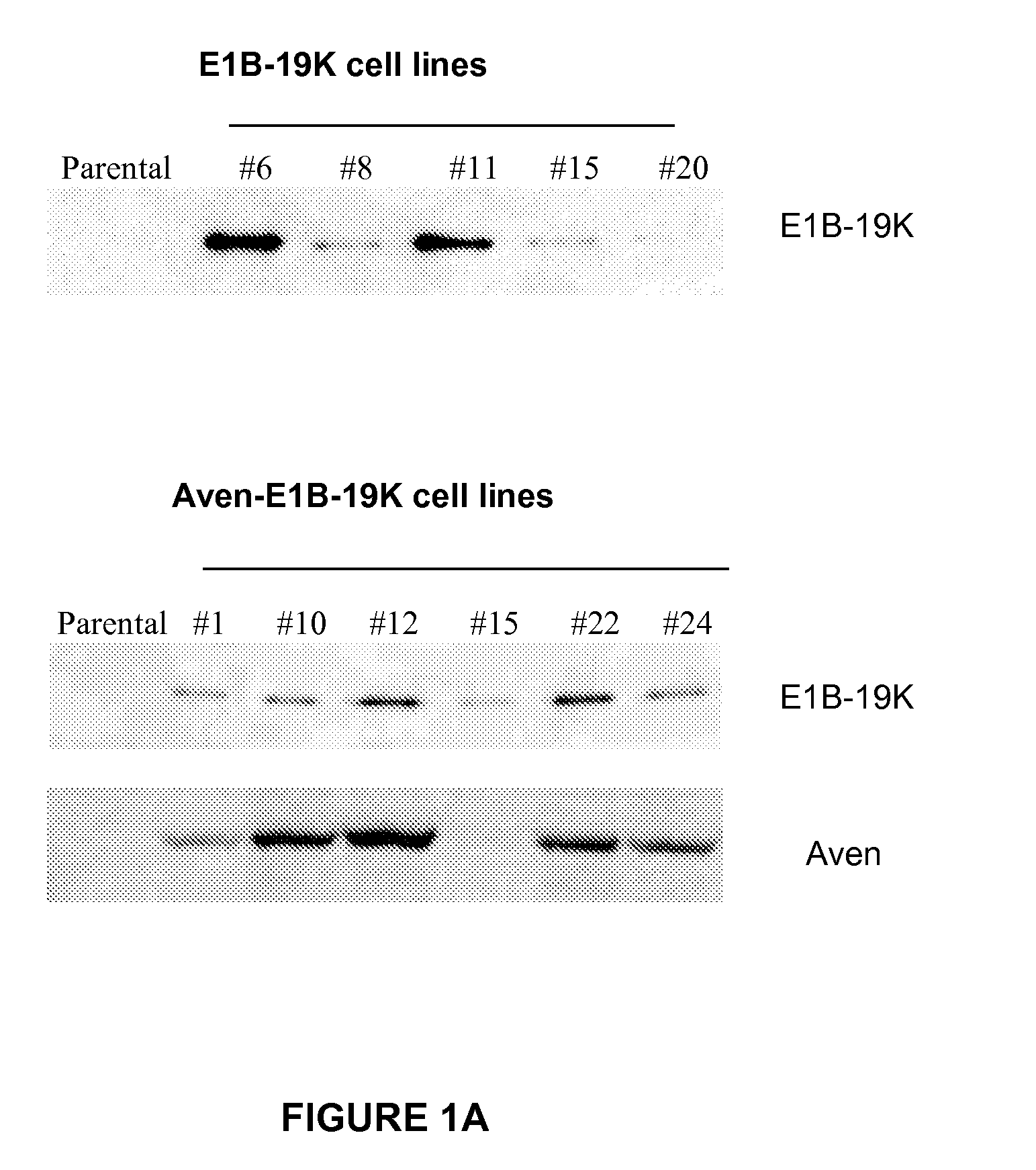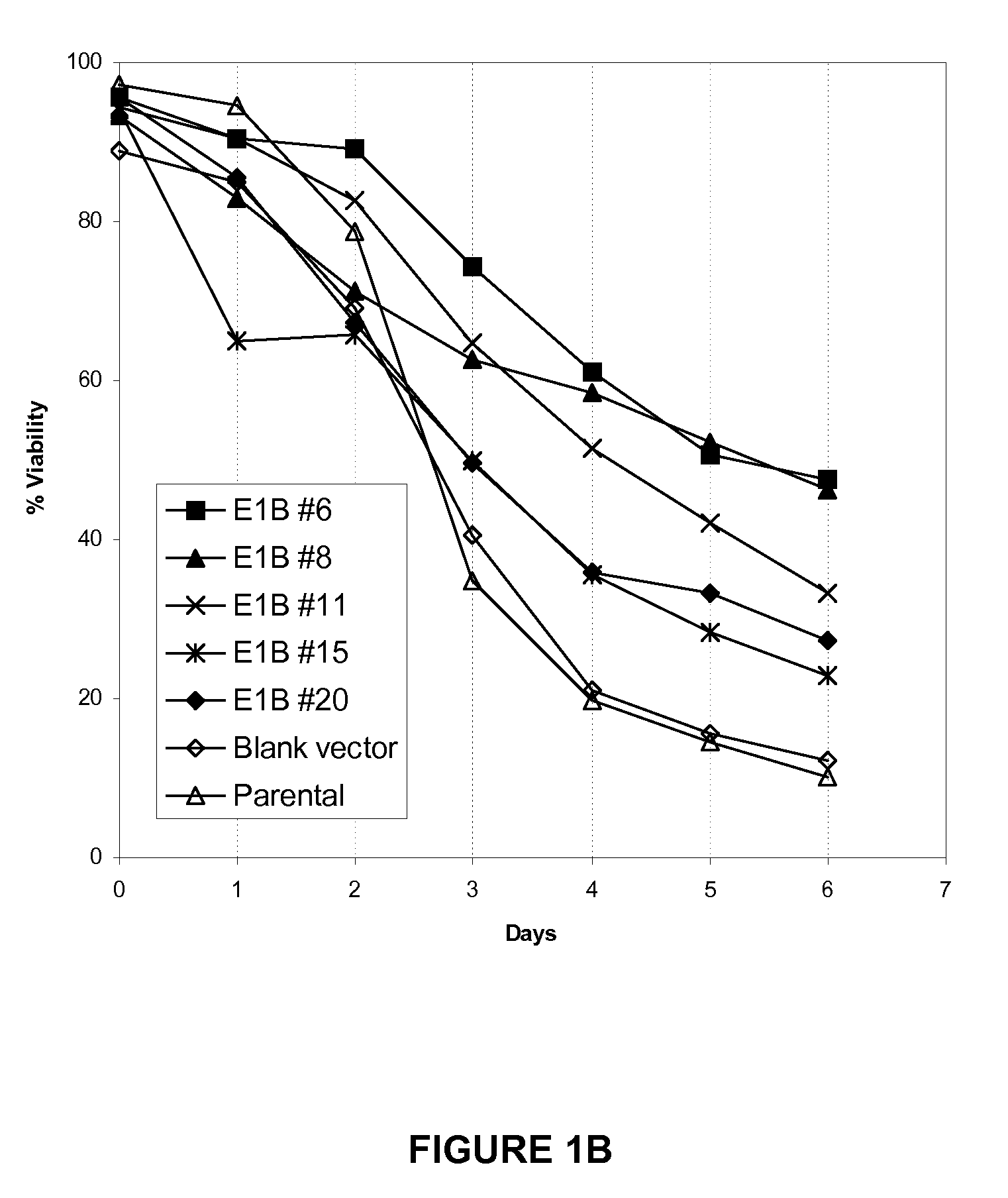Application of Anti-Apoptotic Gene Expression in Mammalian Cells for Perfusion Culture
a technology of anti-apoptotic gene and perfusion culture, applied in the field of anti-apoptotic genes, can solve problems such as conflicting effects on specific productivity, and achieve the effect of preventing or delaying programmed cell death in the cell
- Summary
- Abstract
- Description
- Claims
- Application Information
AI Technical Summary
Benefits of technology
Problems solved by technology
Method used
Image
Examples
example 1
Plasmid Construction
[0052]A vector, pBUDCE4.1 (pBUD) (Invitrogen, Carlsbad, Calif.), was used for constitutive expression of Aven (SEQ ID NO: 1-2) and E1B-19K (SEQ ID NO: 3-6). The vector was designed for constitutive expression of two genes simultaneously, using the pCMV promoter and the pEF-1alpha promoter. The Aven gene was subcloned into pBUDCE4.1 vector using BamHI site and expressed by the CMV promoter. The E1B-19K gene was subcloned into the same pBUDCE4.1 vector using NotI and XhoI sites and expressed by the EF-1 alpha promoter. The Aven-E1B-19K vector contains each gene expressed by the corresponding promoter. The E1B-19K vector only contains the E1B-19K gene expressed by the EF-1 alpha promoter. The blank vector refers to the original pBUDCE4.1 vector.
example 2
Creation of Stable Cell Lines
[0053]A BHK-21 cell line expressing recombinant FVIII (BHK-FVIII) was supertransfected with blank vector, E1B-19K vector, or Aven-E1B-19K vector using Lipofectamine Plus (Invitrogen, Carlsbad, Calif.) according to the manufacturer's instructions. Stable cell lines were created under selection of 1 mg / mL Zeocin (Invitrogen) in adherent culture supplemented with 5% FBS. Approximately 100 clones of each construct were isolated and analyzed for FVIII expression levels (SEQ ID NO: 7). Approximately 25 clonal isolates were selected, and the expression of Aven and E1B-19K expression was detected by immunoblotting. Based on the expression level of Aven and / or E1B-19K and FVIII productivity, 3-6 clones of each construct were adapted to serum-free suspension culture in the absence of Zeocin. Aven and E1B-19K expression from cells cultured with no antibiotics was confirmed to be stable by another round of immunoblotting (FIG. 1A).
example 3
Immunoblotting Analysis
[0054]Cells were collected with lysis buffer containing 1% NP-40, 120 mM Tris-HCl, 150 mM NaCl, 0.2 mM PMSF, and 1 mM EDTA. Protein concentration was determined using BCA protein assay kit (Pierce, Rockford, Ill). Equal amounts of protein were loaded per lane. The proteins were separated by gel electrophoresis, transferred to a nitrocellulose membrane (Bio-Rad, Hercules, Calif.), and immunoblotted with rabbit anti-Aven antibody at a dilution of 1:1000 (Chau, et al., 2000) and mouse anti-E1B-19K antibody at a dilution of 1:40 (Calbiochem, San Diego, Calif.).
PUM
| Property | Measurement | Unit |
|---|---|---|
| temperature | aaaaa | aaaaa |
| shear stress | aaaaa | aaaaa |
| viable cell density | aaaaa | aaaaa |
Abstract
Description
Claims
Application Information
 Login to View More
Login to View More - R&D
- Intellectual Property
- Life Sciences
- Materials
- Tech Scout
- Unparalleled Data Quality
- Higher Quality Content
- 60% Fewer Hallucinations
Browse by: Latest US Patents, China's latest patents, Technical Efficacy Thesaurus, Application Domain, Technology Topic, Popular Technical Reports.
© 2025 PatSnap. All rights reserved.Legal|Privacy policy|Modern Slavery Act Transparency Statement|Sitemap|About US| Contact US: help@patsnap.com



